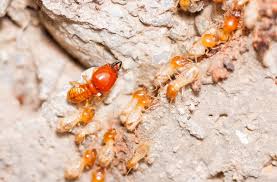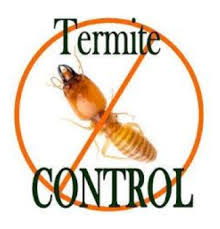Termite Control Specialists Fundamentals Explained
This webpage describes the three types of the termite species which are located in infestations around Australia, subterranean, drywood and dampwood, and termite.
Termites are classified into three categories depending on their nesting and feeding habits: dampwood, drywood and subterranean.
Subterranean termites are the most common kind of termite that are among the most damaging pests worldwide and infests timber. Outdoors timber that is dead is mainly infested by them in contact with the dirt, such as stumps, trees and branches. They prefer although they can digest wood wood that has some amount of rot which makes it easier for them to digest it. .
The 3-Minute Rule for Termite Control Review
Subterranean termites will need to be near a supply of moisture to survive, making their nests in or close to the ground where moisture can be easily acquired by them from the soil. They tunnel through soil to get timber or soil and in dry seasons that they float into the soil to achieve moisture. .
The termites use soil as a material to build nests and shelter tubes, which are composed of dirt, wood, faeces and saliva. Some species build carton nests above ground and build shield tubes (also called sand tubes) to connect the nest to the ground.
Foraging is determined by the weather, with activity in summer and activity in chilly or conditions after rainfall. In tropical areas they can forage with peaks during warmer weather, wetter conditions.
Termite Control Review for Dummies
Drywood termites reside in small colonies, usually less than 1000 individuals inside parts of timber. There might be several colonies inside a single piece of timber or object. They could feed across rings as is typical termites, so the galleries don't adhere to the grain of wood, but they tend to avoid heartwood.

Colonies can grow for years undetected until the timber breaks or even the termites swarm. Until the population reaches a critical point, the winged alates, that would be might not be made for years in a new colony. They leave the nest to pair up and find a site in order to mate and begin a new colony, usually not. .
Dampwood termites normally infest wood that stays moist due to contact with the soil or, for example, through a water flow in a building. They are most likely to infest timber that's outside stump or logs in contact.

Some Known Incorrect Statements About Termite Control Services In Adelaide
Dampwood termites live completely they make open galleries and feed on. As with termites, they can infest wood for many years before they're found, which is likely when the alates swarm from a mature colony. Swarming may occur with different species swarming at different times, over a few months.
They're an indication of a moisture issue if they're observed in a building. They are pests that are minor and can be controlled in structures by removing the supply of moisture. In live trees that they have a tendency to feed on wood that is rotting and dead.
Termite species can be difficult to recognize, even for the specialists. Identification is usually dependent on the soldiers, which is the caste which has the most readily distinguishable features.
Of the insect species it is the Coptotermes species that are public enemy number 1 in Australia.
Our Termite Control Services In Adelaide Ideas
The mind of the soldier is and yellow with darker thin mandibles. Body is left up to 7 mm long. It's easily confused with two other native Coptotermes species, C. frenchi and C. lacteus (Victoria Museum)
The soldiers generate a white sticky liquid from a opening (fontanelle) on front of mind when defending the nest from assault.
Coptotermes species generally do not build mounds, but in Queensland and other regions of Australia. They mostly nests in trees, stumps, sticks, buried timber spaces, around homes under buildings and in walls. Trees for nesting are various eucalypts, oaks and peppercorns. try this site The colony is found in the part of the trunk or the root crown.
What Does Termite Control Specialists Do?
Though Mastotermes darwiniensis is the more destructive locally across its limited range in tropical Australia, coptotermes acinaciformis have become the termite species in Australia overall. C. acinaciformis strikes all lumber structures and obligations forest and ornamental trees as well as fruit trees.